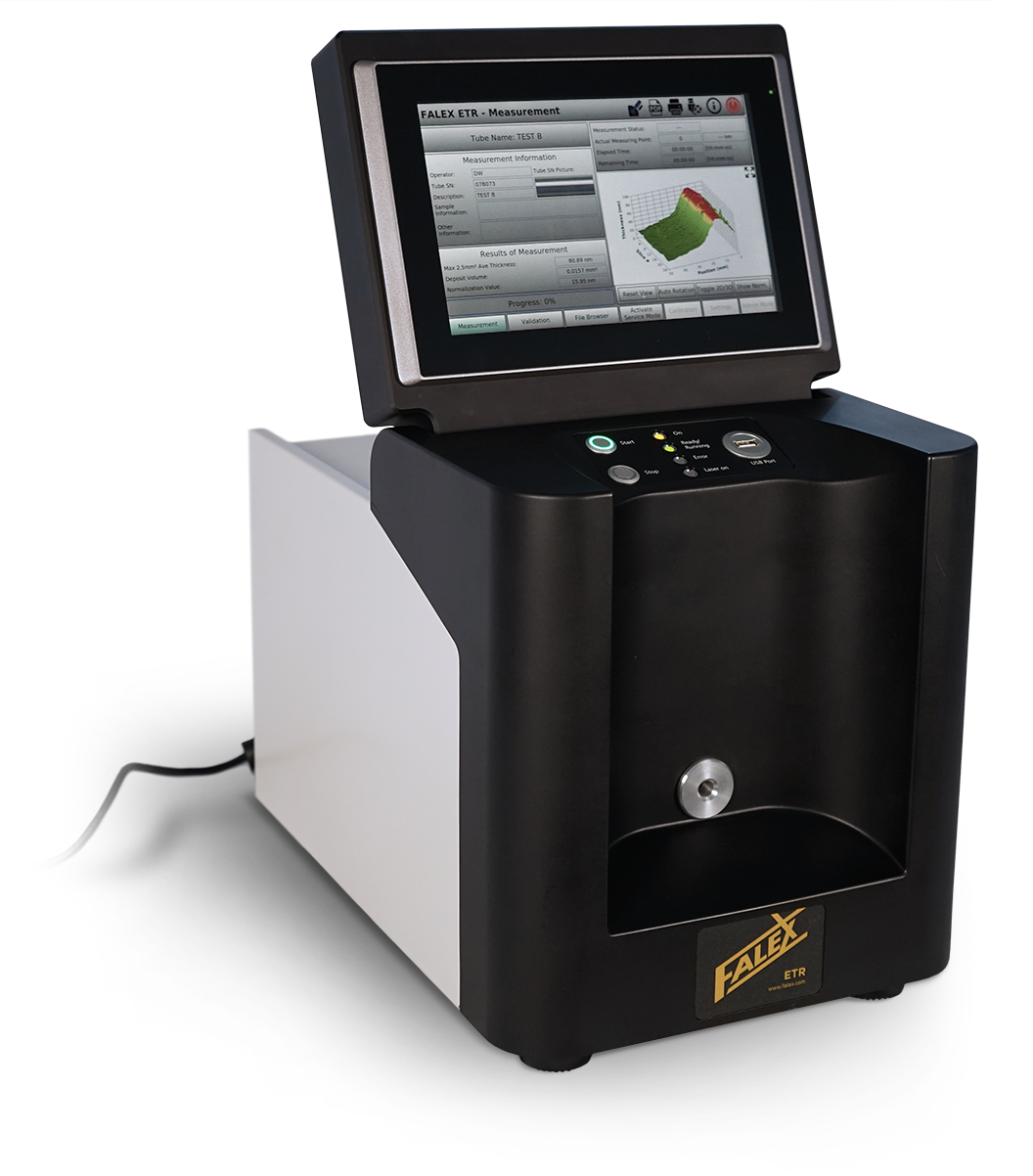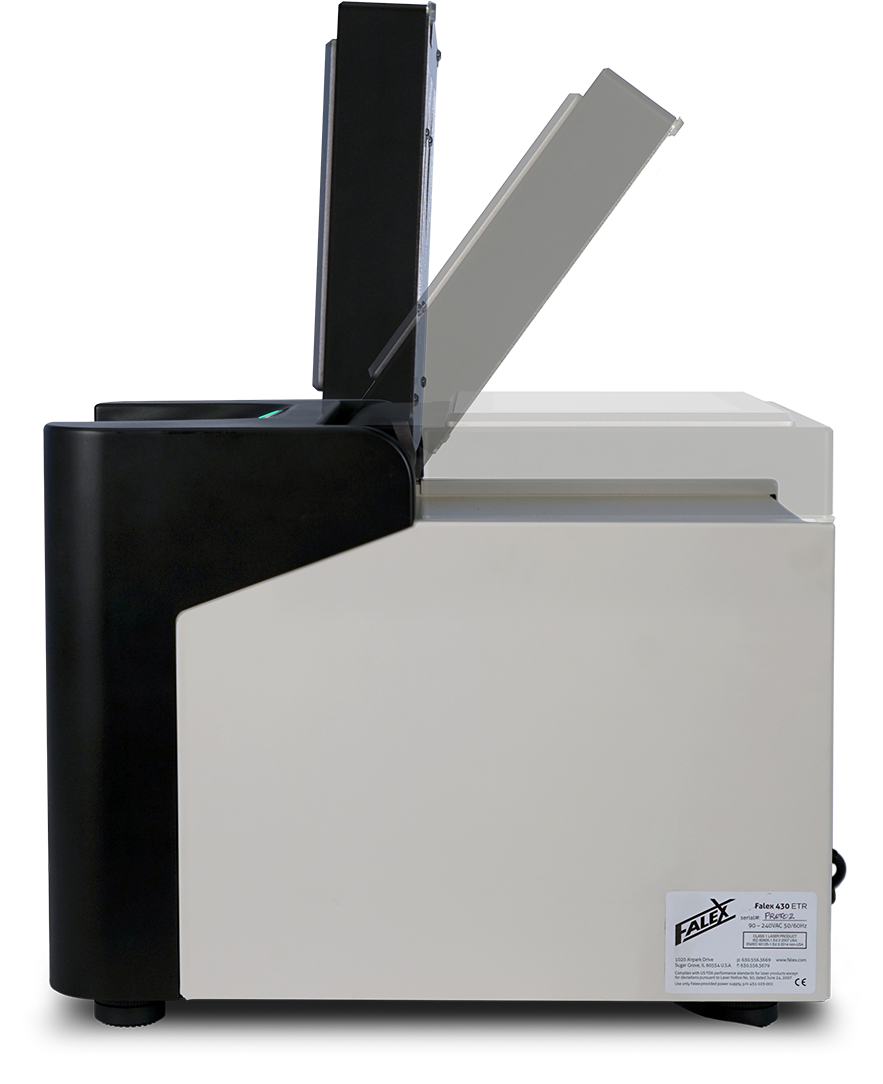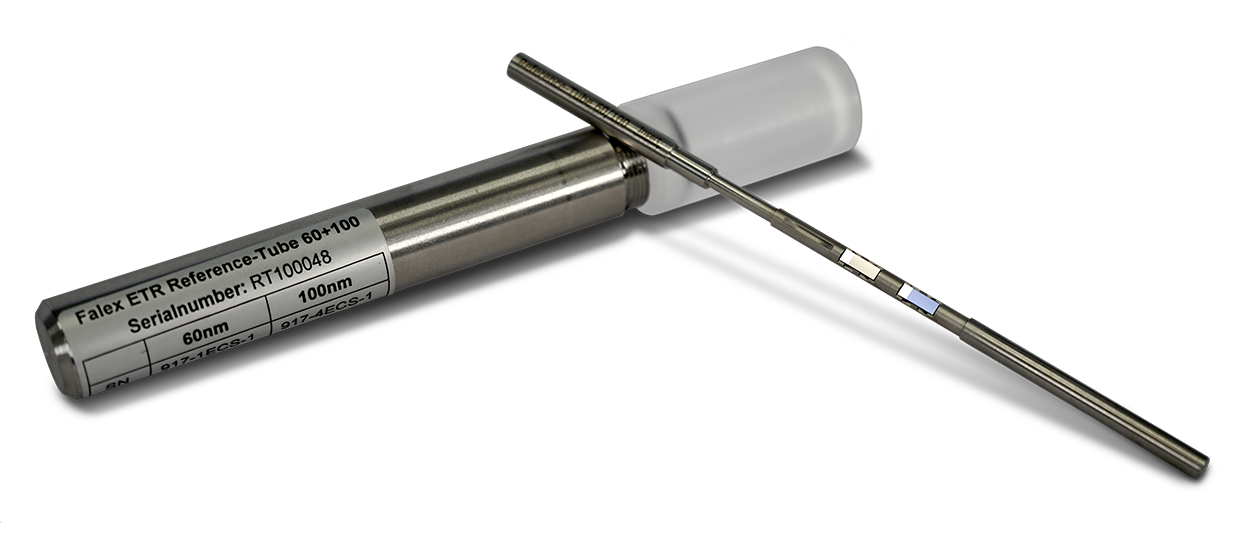Ellipsometer



The Falex 430 ETR is the first quantitative and completely objective instrument for the analysis of D3241 Thermal Oxidation Stability of Aviation Turbine Fuels heater tube deposit thickness. The Falex 430 ETR determines average deposits thickness of a 2.5 mm2 spot and the complete deposit volume for the ultimate in heater tube deposition measurement as designated in ASTM D3241 Annex 3. The instrument is fully automated, with a safe, completely enclosed laser light source with an optical detection system. Large color display simplifies reporting and produces a three dimensional representation of the deposit which shows the exact spot where the average deposit thickness was determined. The user can run the default Annex 3 heater tube analysis or make custom analyses by changing any of the following variables: number of points, positions of points, reflectivity of the tube or density of the deposit. The advanced software facilitates report generation.
Features in the new Falex 430 ETR include:
-
- Fast Analysis, less than 18 minutes
- Small size: 26.0 x 40.0 x 35.0 cm (10″ x 15.6″ x 13.7″)
- Light weight: only 15 kg
- More durable—simplified mechanical structure
- Easy tube handling—frontal insertion, automatic handling
- Simple one button test procedure
- Automatic heater tube serial number recognition and reporting
- Auto calibration
- Embedded Linux system
Ellipsometric Tube Rating (ETR) method is the referee method for analyzing D3241 heater tube deposits.
The ASTM D1655-14c Specification for Aviation Turbine Fuels contains the only reference to a heater tube deposit rating referee method in Table 1, Note M. It states that, “in cases of disputes, the referee SHALL BE CONSIDERED the Annex 3 ETR (ellipsometer/ETR)”. This means that whenever a test result is disputed, the ETR result is the only referee measurement method.